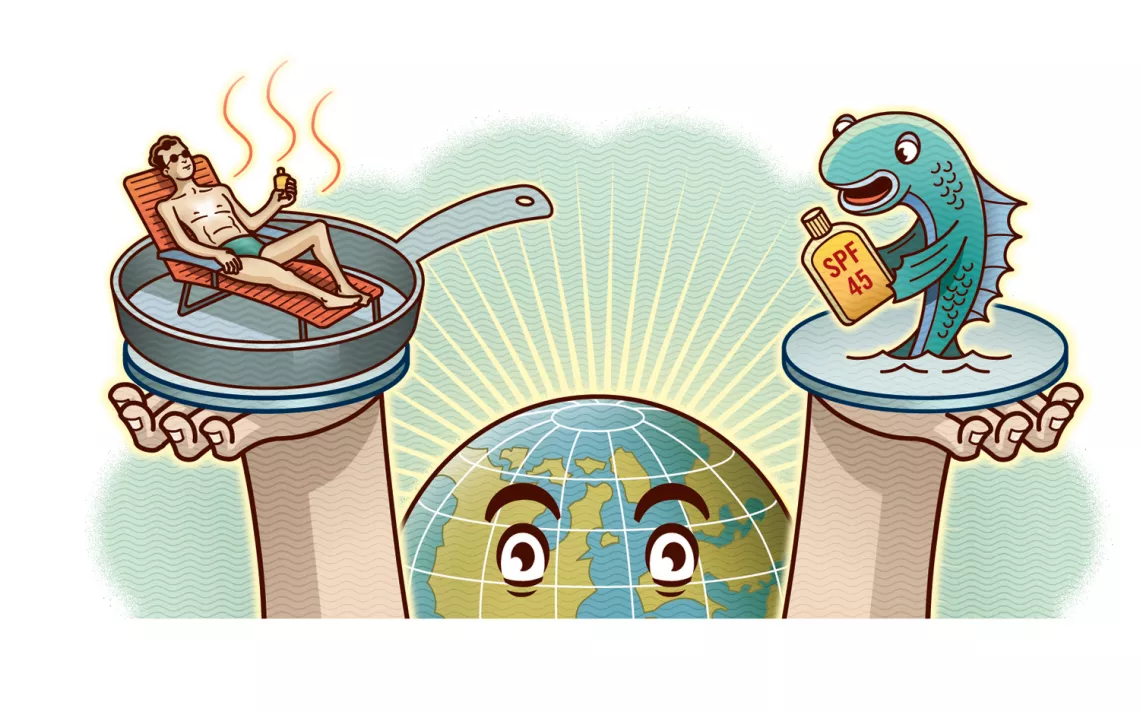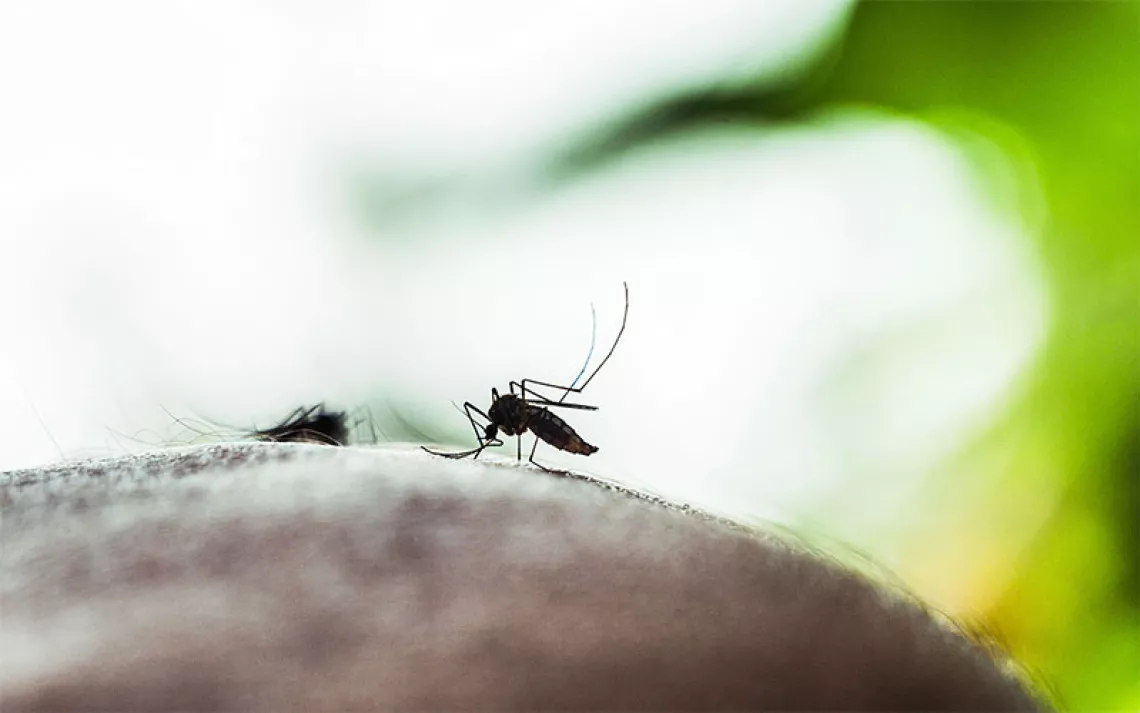On the One Hand: Sunscreen

Illustration by Peter and Maria Hoey
ON THE ONE HAND . . .
A team of researchers led by Harvard University professor James G. Anderson has found that climate change is depleting the protective ozone layer over the United States, which means that more ultraviolet radiation will be landing on our sensitive hides. Ironically, this sunshine problem is caused by rain: As thunderstorms grow more frequent and intense, they inject water vapor into the stratosphere, where it converts stable forms of chlorine and bromine into volatile free radicals that can transform ozone into oxygen. That's bad news for your epidermis. Skin cancer is already the most common form of cancer in the United States, with one out of every five Americans developing it at some point in their lifetime. Don't forget the sunscreen.
ON THE OTHER . . .
Every year, up to 6,000 tons of sunscreen washes from the bodies of swimmers into the ocean. All that white goop is laden with chemicals--UV blockers, preservatives, coloring agents, fragrances, spreading agents, and surfactants--that can play havoc with marine ecosystems. Four compounds frequently used in commercial sunscreens are known to cause coral reef bleaching and die-off, even in small amounts, by sickening a vital alga that helps coral with photosynthesis. In addition, scientists studying the impact of sunscreen on the waters around the heavily touristed island of Majorca found that 13 commercial sunblocks were toxic to phytoplankton and contained ingredients that could lead to algal blooms
 The Magazine of The Sierra Club
The Magazine of The Sierra Club







